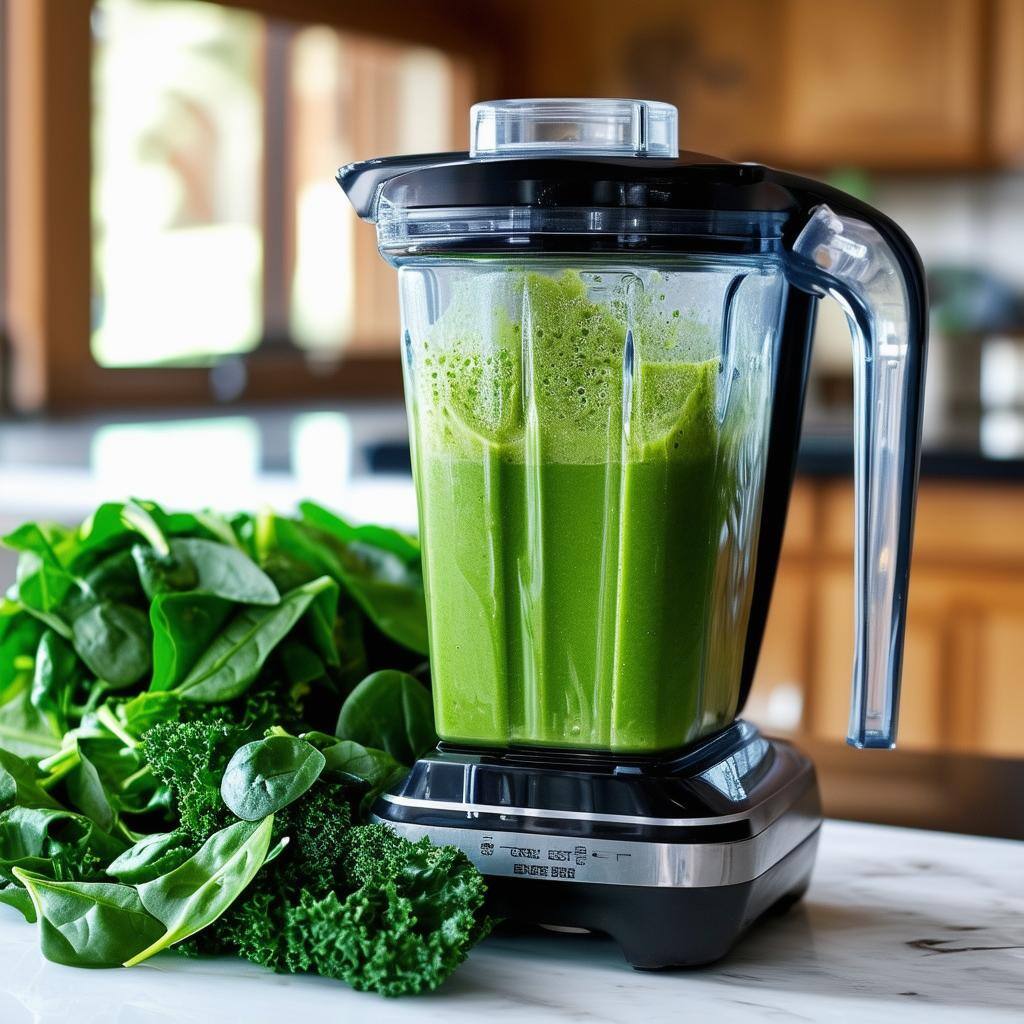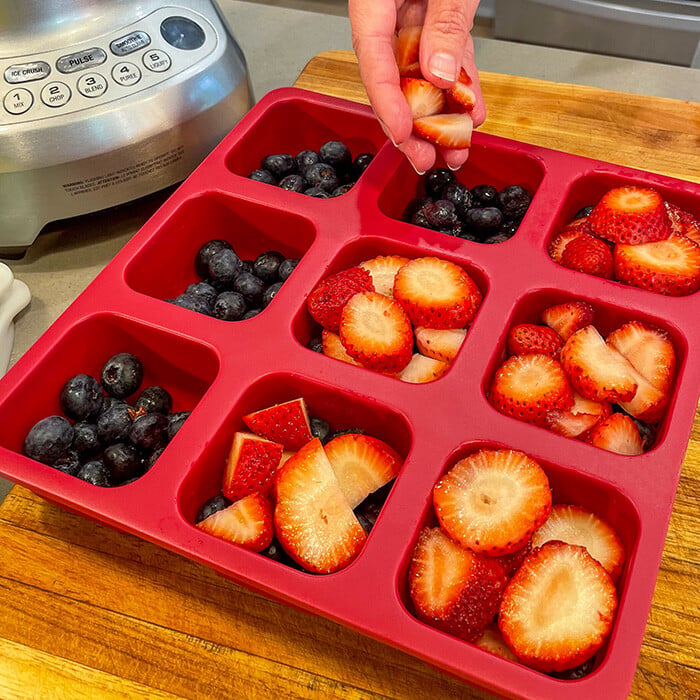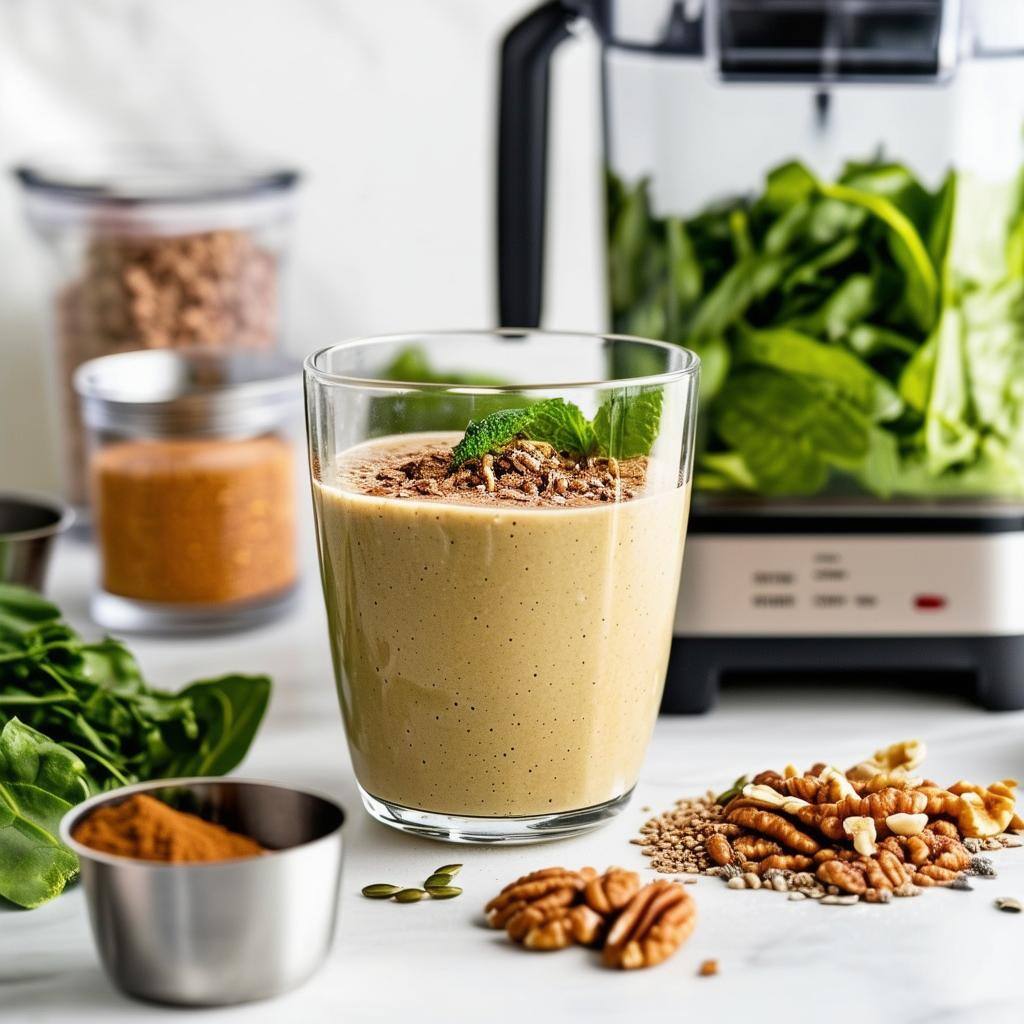As a smoothie aficionado, I've whirled my way through countless combinations of fruits, veggies, and everything in between. My journey of exploring unique blends taught me one invaluable lesson: the magic of leafy greens.
Far from just a staple for salads, these nutritional powerhouses can transform any smoothie, enhancing both its nutritional profile and taste.
Leafy greens don't have to dominate your smoothie to make an impact. While the concept of green smoothies might evoke thoughts of strictly kale or spinach-dominated drinks, the truth is, adding a cup of leafy greens can complement the flavors you already know and love while helping boost your daily nutrient intake.
Let's dive into how integrating leafy greens into your smoothies is a stealthy way to boost your intake of essential nutrients without sacrificing flavor.
The Benefits of Adding Greens in Smoothies
Leafy greens are nutritional powerhouses, rich in vitamins A, C, and K, minerals like iron and calcium, and packed with fiber. Adding them to smoothies is an excellent way to boost your daily intake of these essential nutrients, supporting everything from bone health to immune function.
Why Any Smoothie Can Be a Green Smoothie
The beauty of adding greens to smoothies is their versatility. You don't need to dedicate yourself to making only "green smoothies" to reap the benefits.
Incorporating a half-cup or a whole cup of leafy greens into your favorite fruit blends is a simple yet effective way to increase your green intake. This approach allows you to enjoy the flavors you love while silently boosting the smoothie's nutritional value.
Ready to blend up some magic?
Check out The Ultimate Collection of Timeless Smoothie Recipes
and take your smoothie game to the next level!
Freezing Greens for Convenience
Unsure if freezing greens is a good idea? Yes, you can, and should, freeze spinach, kale, and other leafy greens for smoothies. Freezing not only extends their shelf life but also makes your smoothie-making process more efficient.
How to Properly Freeze Greens:
- Preparation: Begin by thoroughly washing and drying the greens. For kale, removing the stems is recommended due to their toughness and bitter taste.
- Freezing Method: The simplest method is to use the Smootheeze Silicone Freezer Tray to pack your chosen green into a 1/2 cup portion. This individual freezing method prevents them from sticking together, making it easier to portion out for smoothies later. You can also freeze greens in plastic bags or containers but that’s not recommended for environmental reasons. It’s also a less convenient way to portion ingredients and store them neatly in the freezer.
- Storage: Seal the Smootheeze tray with the air-tight silicone lid and stack it in the freezer. Then, simply remove the tray from the freezer and pop out however many 1/2 cup portions you need. If you’re using a plastic bag or container, try to remove the needed amount and add it to your blender.
Expanding Your Green Horizons
While spinach and kale are the go-to choices for many, don't shy away from experimenting with other greens. Swiss chard, collard greens, carrot tops, beet greens, and even microgreens offer unique nutritional benefits and flavors. Each type of green brings its own set of vitamins and minerals, diversifying your nutrient intake.
Incorporating Greens Without Overpowering Flavor
The key to adding greens to any smoothie without compromising taste lies in balance. Start with a base of fruits you enjoy—like bananas for sweetness or berries for a tart kick—then add your greens. This method ensures the fruit flavors remain front and center while the greens contribute a subtle, nutritious background note.
Want a run-down on everything that goes into making the perfect smoothie?
Check out our How to Make a Smoothie Guide.
Types of Greens to Try in Your Smoothie (and Their Nutritional Benefits)
Here’s a list of leafy greens that can easily boost the nutritional profile of your smoothies. Each brings something unique to the table, so don't be afraid to mix and match!
Spinach
A classic go-to for smoothies, spinach is mild in flavor and loaded with vitamins A and C, iron, and folate. It's a great source of plant-based calcium and antioxidants, making it a fantastic addition for bone health and immune support.
Kale
Known as a superfood, kale is packed with fiber, vitamin K, and vitamin C. It also contains compounds like lutein and zeaxanthin, which are essential for eye health. Despite its hearty texture, kale blends well into smoothies when paired with sweet fruits like banana or mango.
Beet Tops
Don’t toss those beet greens! They’re rich in potassium, magnesium, and iron, plus they offer a boost of fiber. Beet tops also contain betalains, which may help with inflammation and support liver detoxification.
Mustard Greens
These slightly spicy greens add a kick to your smoothie and are an excellent source of vitamins A, C, and K, as well as folate and calcium. They’ve got powerful antioxidants that can help protect your cells from damage.
Carrot Tops
Often overlooked, carrot tops are surprisingly nutritious. They’re packed with potassium and vitamin K, essential for heart and bone health. While they have a slightly earthy taste, mixing them with fruits like pineapple or orange helps balance their flavor in smoothies.
Microgreens
These tiny greens may be small, but they’re mighty! Microgreens often contain higher concentrations of nutrients like vitamins C, E, and K compared to their mature counterparts. Depending on the type, they can add subtle peppery or fresh notes to your smoothie without overpowering it.
Adding any of these greens to your smoothie gives you an easy way to up your daily nutrient intake—plus, they blend right in with any of your favorite recipes.
A Closer Look at Green Supplement Powders
Using fresh produce is typically seen as the best way to reap the nutritional benefits of greens, you can consider green supplement powders to pack in an even greater nutrient boost.
Greens powders have become popular additions to wellness routines, touted for their ability to provide the nutritional equivalent of a day's worth of fruits and vegetables in a single drink. These supplements vary in their compositions but typically blend fruits, vegetables, and sometimes additional ingredients like herbs and adaptogens, aiming to supplement dietary nutrition gaps.
While these products often come with bold claims about their health benefits, including improved gut health, enhanced immunity, and elevated energy levels, greens powders should not be seen as a substitute for a balanced diet rich in whole fruits and vegetables but rather as a convenient method to compliment an already healthy diet.
So, What’s in It?
According to nutrition experts, green powders can contain anywhere from 25 to 40 or more different ingredients—including spinach, kale, kelp, parsley, beets, carrots, grasses, blueberries, raspberries, green tea extracts, fibers, and mushrooms.
Green powder supplements can also contain superfood ingredients like spirulina, acai berry, goji berry, chlorella, and digestive enzymes. Users report experiencing great benefits to how they feel, while others report disruptions to their gut health. So, be sure to do your own research and start with small amounts to see how your body reacts.
Making Greens a Smoothie Staple
Leafy greens, with their versatile flavor profiles and impressive nutrient content, should be a staple in any smoothie recipe, not just those labeled as "green smoothies."
By adopting the habit of adding at least a half-cup of greens to your blends, you'll effortlessly increase your daily vegetable intake. This simple practice ensures you're not only enjoying delicious smoothies but also investing in your health with every sip. Check out Smootheeze freezing trays for a hassle-free way to prep leafy greens for use in your favorite blends.
Remember, the art of smoothie making is in experimentation. Mixing flavors you love with nutrient-rich greens offers the best of both worlds—taste and health, blended seamlessly.
Happy blending!
FAQs About Using Leafy Greens in Smoothies
What are the benefits of adding leafy greens to smoothies?
Leafy greens like spinach, kale, and Swiss chard are rich in vitamins A, C, and K, minerals like iron and calcium, and fiber. Adding them to smoothies boosts nutrition, supports bone health, improves digestion, and strengthens the immune system—all while adding minimal calories.
Which leafy greens are best for smoothies?
Spinach and kale are popular choices because of their mild flavor and nutrient density. However, you can also use Swiss chard, collard greens, beet greens, and even microgreens to diversify the greens in your smoothie recipes.
How can I freeze leafy greens for smoothies?
Freezing greens like spinach and kale is simple and helps reduce waste. Wash, dry, and portion the fresh greens using a silicone freezer tray like Smootheeze. This method makes it easy to add pre-portioned greens to your smoothie. Just pop them out and blend!
Do leafy greens change the flavor of smoothies?
Leafy greens can subtly change the flavor, but when paired with sweet fruits like bananas or berries, the "green" taste is masked. Start with a half-cup to balance flavor while boosting the smoothie’s nutritional value.
Can I use green powders in my smoothies instead of fresh greens?
Yes, green supplement powders are a convenient alternative when fresh greens aren’t available. These powders often contain a mix of greens, fruits, and superfoods like spirulina and chlorella. However, they should complement—not replace—whole foods in your diet.
What are some tips for adding leafy greens to smoothies without overpowering the flavor?
To keep your smoothie tasting fruity, start by blending mild greens like spinach with your favorite fruits. Bananas, mangoes, and berries are excellent for masking the earthy flavor of greens while keeping your smoothie sweet and tasty.
How much leafy greens should I add to a smoothie?
Start with a half-cup of leafy greens, and gradually increase up to a full cup or more as your taste adjusts. This amount adds significant nutritional value without overwhelming the flavor of your smoothie.
Can I use frozen greens in smoothies?
Absolutely! Frozen greens work just as well as fresh. In fact, freezing greens preserve their nutrients and makes your smoothie prep more convenient. Just grab a portion from your freezer and blend them right in. Frozen ingredients also add a thick and frosty texture enjoyed by many smoothie drinkers.
Can you freeze microgreens for smoothies?
Yes, you can freeze microgreens for smoothies! Freezing microgreens preserves their nutrients and extends their shelf life. To freeze them, wash and dry the microgreens thoroughly, then portion them using a silicone freezer tray like Smootheeze. This makes it easy to pop out small, pre-portioned amounts whenever you're ready to blend them into your smoothie. Just keep in mind that freezing microgreens may slightly alter their texture, but they’ll still blend smoothly and retain their nutritional value.




